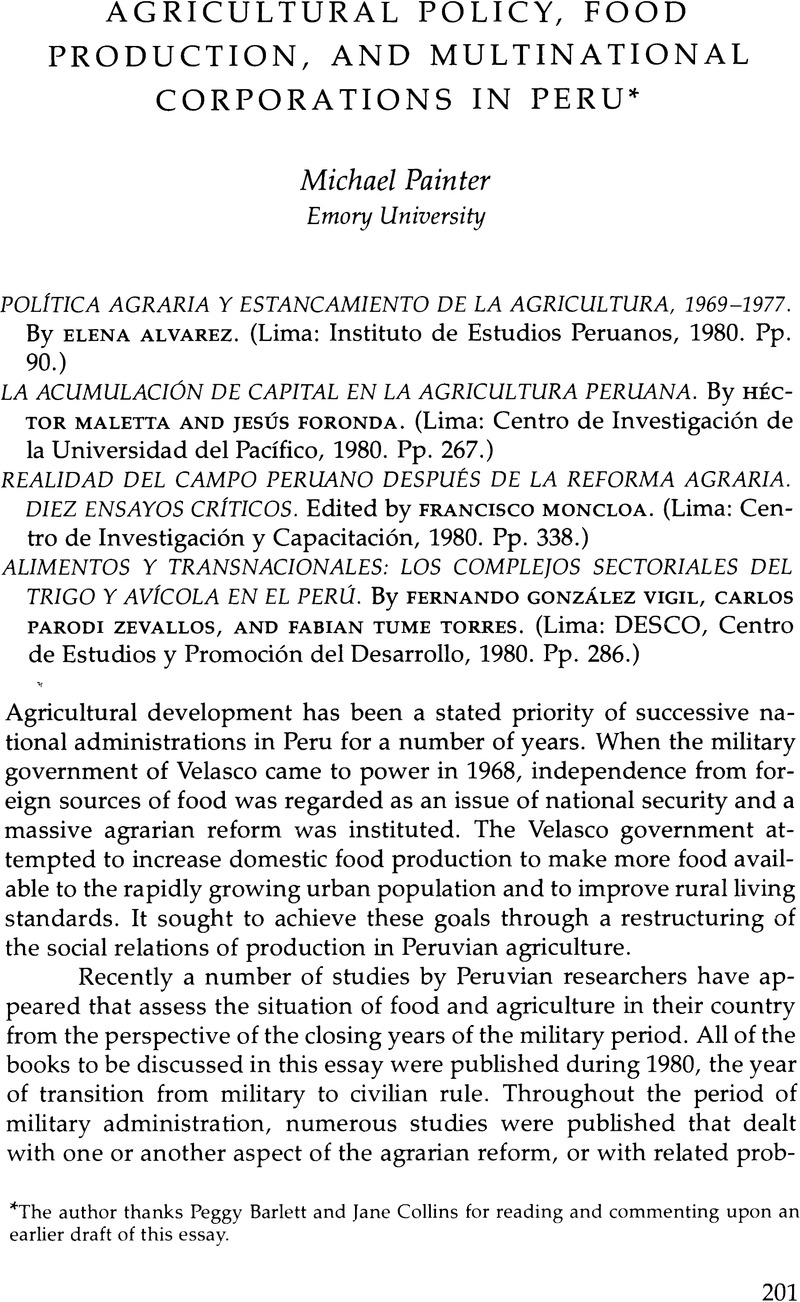Article contents
Agricultural Policy, Food Production, and Multinational Corporations in Peru
Review products
Published online by Cambridge University Press: 24 October 2022
Abstract

- Type
- Review Essays
- Information
- Copyright
- Copyright © 1983 by the University of Texas Press
Footnotes
The author thanks Peggy Barlett and Jane Collins for reading and commenting upon an earlier draft of this essay.
References
Notes
1. Corn grown in the highlands is primarily for human consumption. The corn included among the products for urban consumption is hard yellow corn, consumed indirectly as poultry feed.
2. A mean annual urban population growth rate of 6.4 percent is an unofficial estimate. The official estimate is 5.0 percent.
3. Alvarez draws these figures from José María Caballero, “La economía de la sierra peruana en los albores de la reforma agraria” (Lima: Instituto de Estudios Peruanos, 1979).
4. “Majes: A Challenge to Nature,” Peru Reports 2 (1976):7.
5. Samaniego also discusses the wheat and poultry industries. Discussion of these is omitted here because these cases are treated in detail by González Vigil, Parodi Zevallos, and Tume Torres in the final book to be discussed in this essay.
6. For a detailed description of the Peruvian food-marketing network and its domination by a small group of bulkers and shippers, see Oscar Esculies Larrabure et al., Comercialización de alimentos (Lima: DESCO, Centro de Estudios y Promoción del Desarrollo, 1977).
7. See, for example, Leonard Dudley and Roger J. Sandilands, “The Side Effects of Foreign Aid: The Case of Public Law 480 Wheat in Colombia,” Economic Development and Cultural Change 23 (January 1975):325-36 and J. S. Mann, “The Impact of Public Law 480 on Prices and Domestic Supply of Cereals in India,” Journal of Farm Economics 49 (February 1969):143.
8. Michael Painter, “The Political Economy of Food Production: An Example from an Aymara-Speaking Region of Peru.” Ph.D. dissertation. Ann Arbor: University Microfilms.
- 1
- Cited by




